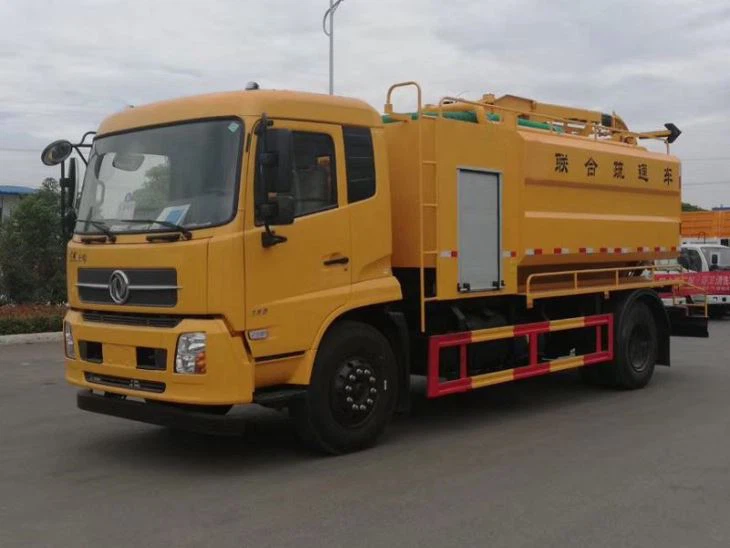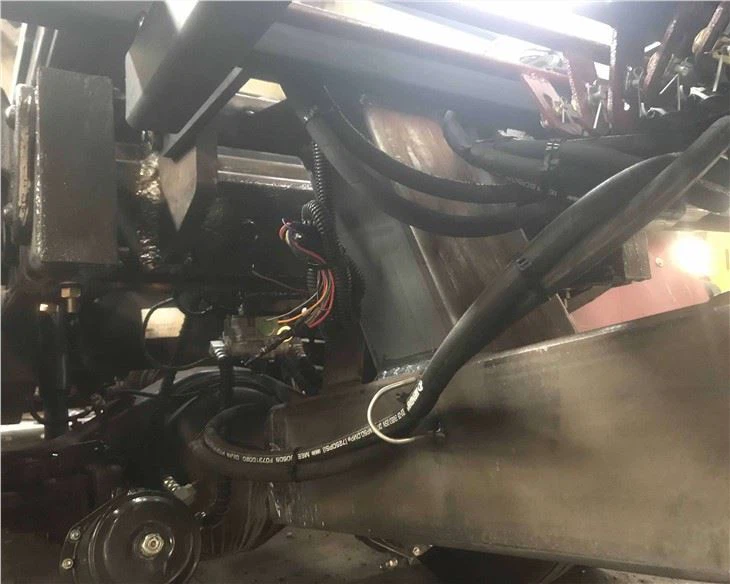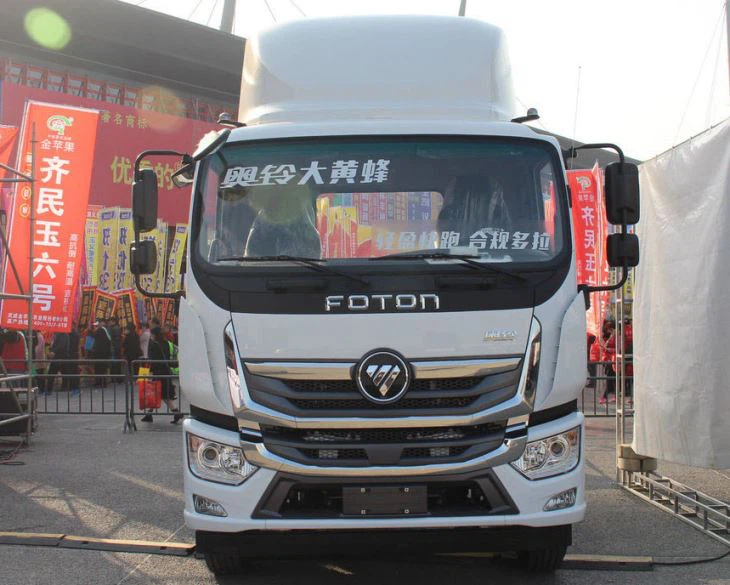Understanding Truck Dumpers: Types, Uses, and Operational Efficiency

Truck dumpers are essential equipment in industries ranging from construction to agriculture, facilitating the efficient unloading of bulk materials. In this comprehensive article, we will explore the mechanics of truck dumpers, their various types, practical applications, maintenance, and more to enhance your understanding of this indispensable machinery.
1. What is a Truck Dumper?
A truck dumper is a piece of equipment designed to unload materials quickly and efficiently from a truck or trailer. These machines utilize gravity and hydraulics to lift and tilt the truck bed, allowing the contents to fall out easily. They are typically used in applications where large quantities of bulk materials such as gravel, sand, and agricultural products need to be unloaded promptly.

2. Types of Truck Dumpers
2.1 Trailer Dumpers
Trailer dumpers are specifically designed to handle trailers that have been equipped for dumping. They facilitate a seamless unloading process, ensuring that the contents of the trailer can be discharged with minimal labor.
2.2 Mobile Dumpers
Mobile dumpers, also referred to as portable dumpers, can be moved from one site to another. This versatility makes them ideal for construction projects that require frequent relocation.
2.3 Fixed Dumpers
Fixed dumpers are installed in one location and cater to specific unloading needs. They are often used in facility settings where materials are consistently received and redistributed.
2.4 Rail Dumpers
Rail dumpers are designed to unload bulk materials from rail cars. These machines are critical in industries like mining and agriculture, where rail is a primary transportation method.

3. How Truck Dumpers Work
The operation of a truck dumper is fairly straightforward. Here’s a typical sequence of actions:
- Positioning: The truck backs into the dumper bay, aligning with the dumper structure.
- Securing: Safety mechanisms are engaged to ensure stability during the unloading process.
- Lifting: Hydraulic systems lift the truck bed to create an angle, allowing gravity to assist in unloading.
- Discharge: The contents spill out into a designated area for further processing or collection.
- Lowering: The dumper returns to its original position, and the truck can exit safely.
4. Advantages of Using Truck Dumpers
4.1 Time Efficiency
Truck dumpers significantly reduce the time required for unloading, allowing businesses to increase productivity. In operations where time is critical, this rapid discharge can lead to greater throughput.
4.2 Labor Cost Reduction

By automating the unloading process, companies can cut down on labor costs. Fewer workers are needed to unload materials, allowing them to be allocated to other important tasks.
4.3 Safety Improvements
Truck dumpers enhance safety by minimizing manual handling and reducing injury risks related to heavy lifting. Workers are less exposed to potential accidents associated with traditional unloading methods.
4.4 Versatility
Truck dumpers are versatile and can handle various materials effectively. From agricultural products to aggregate materials, their adaptability makes them suitable for multiple industries.
5. Applications of Truck Dumpers
5.1 Construction
In construction, truck dumpers are critical for unloading materials such as concrete, sand, and gravel quickly. Their use ensures that projects stay on schedule.
5.2 Agriculture
Farmers use truck dumpers for unloading large quantities of grain and other agricultural products, making operations smooth and efficient.
5.3 Mining
The mining industry relies on truck dumpers to unload extracted materials from trucks effectively, which is vital for maintaining production levels.
5.4 Waste Management
In waste management facilities, truck dumpers help unload recyclable materials and refuse quickly, contributing to efficient sorting and processing.
6. Maintenance of Truck Dumpers
6.1 Regular Inspections
To ensure optimal performance and safety, regular inspections should be conducted on all components, including hydraulic systems, electric systems, and structural integrity.
6.2 Lubrication
All moving parts should be adequately lubricated to prevent wear and tear. This maintenance step extends the life of the dumper and ensures smooth operation.
6.3 Component Replacement
Timely replacement of worn-out parts is essential to avoid breakdowns. This may include hydraulic hoses, seals, and safety devices.
6.4 Training Operators
Proper training of personnel operating the dumpers is critical to ensure safety and operational efficiency.
7. Choosing the Right Truck Dumper
Selecting the appropriate truck dumper involves considering several factors:
7.1 Load Capacity
Determine the maximum loads you will be working with to choose a dumper that can handle your requirements.
7.2 Type of Material
Different materials may require specific dumpers—ensure the design of the dumper fits the type of material being unloaded.
7.3 Space and Location
Assess the space available for installation. For smaller areas, a mobile dumper might better suit your needs.
7.4 Budget Considerations
Consider the cost of purchasing or leasing a dumper while accounting for maintenance and operational expenses as well.
8. Cost Factors Associated with Truck Dumpers
| Cost Factor | Description |
|---|---|
| Initial Purchase | The upfront cost of buying a truck dumper varies based on type and capacity. |
| Installation | Costs involved in setting up the dumper at your location. |
| Maintenance | Ongoing costs for parts replacement, lubrication, and inspections. |
| Operating Costs | Costs related to energy consumption and operator wages. |
9. Innovations in Truck Dumper Technology
9.1 Automation
Today, many truck dumpers come with automation features that increase efficiency and reduce the risk of human error.
9.2 Safety Features
New models include advanced safety features such as emergency stop mechanisms and overload sensors to enhance operator safety.
9.3 Energy Efficiency
Many modern truck dumpers are designed to be energy-efficient, utilizing less power while maintaining the same level of productivity.
10. Frequently Asked Questions (FAQs)
10.1 What materials can be unloaded using a truck dumper?
Truck dumpers can unload a variety of materials, including sand, gravel, agricultural products, and construction waste.
10.2 How long does it take to unload a truck using a dumper?
The unloading time varies based on the type of dumper and the load size, but generally, it can be done within minutes.
10.3 Are truck dumpers safe to operate?
Yes, when operated according to manufacturer guidelines and with proper training, truck dumpers are safe to use.
10.4 Can truck dumpers be used in rainy conditions?
While they can be used in light rain, it is advisable to avoid operation in heavy rain due to safety concerns and potential material mixing.
10.5 How often should truck dumpers be maintained?
Regular inspections should be conducted weekly, with detailed maintenance checks at least annually or as recommended by the manufacturer.
10.6 What factors influence the cost of a truck dumper?
The cost can be influenced by factors such as type, capacity, installation expenses, maintenance requirements, and technology features.
